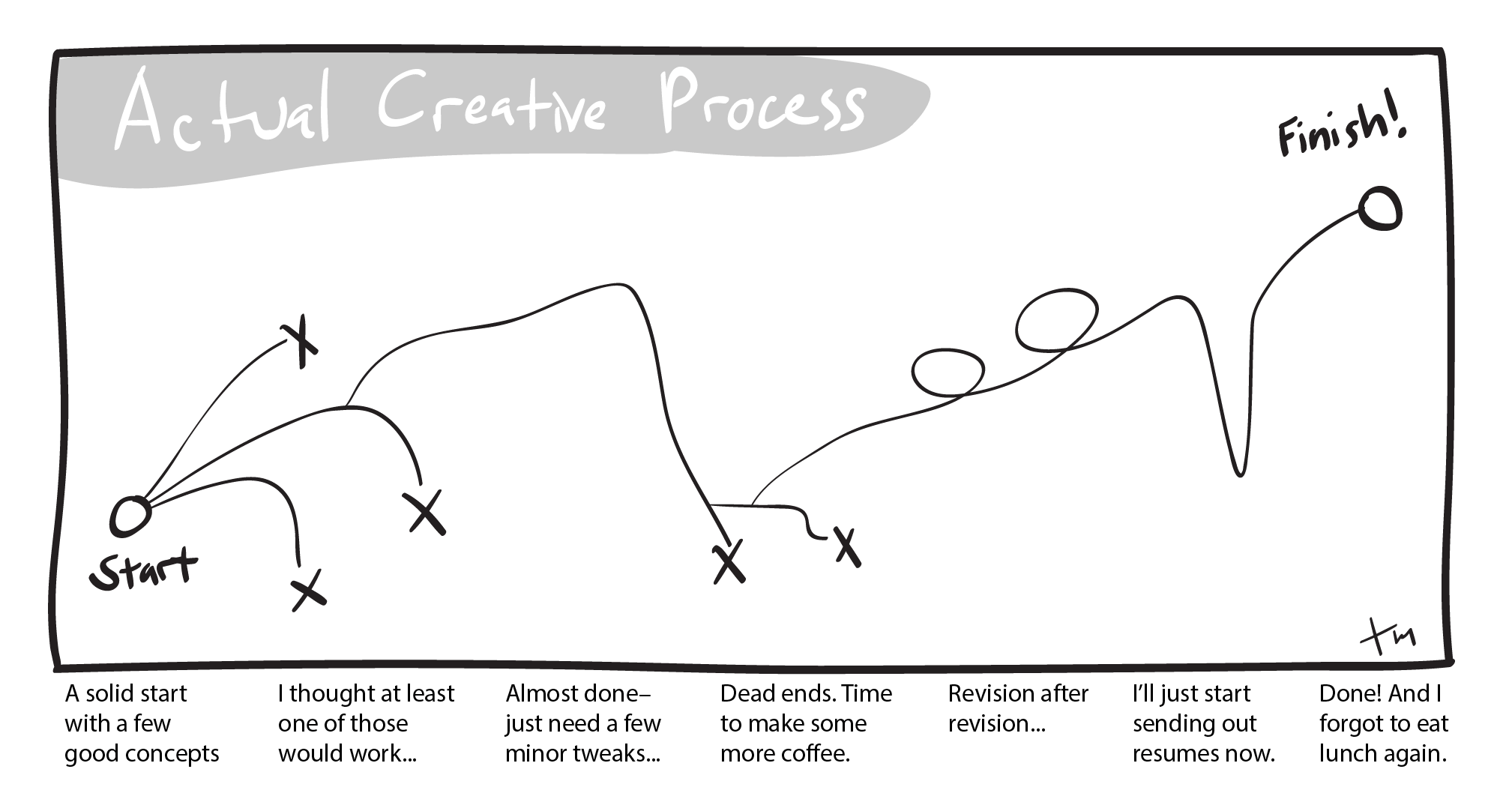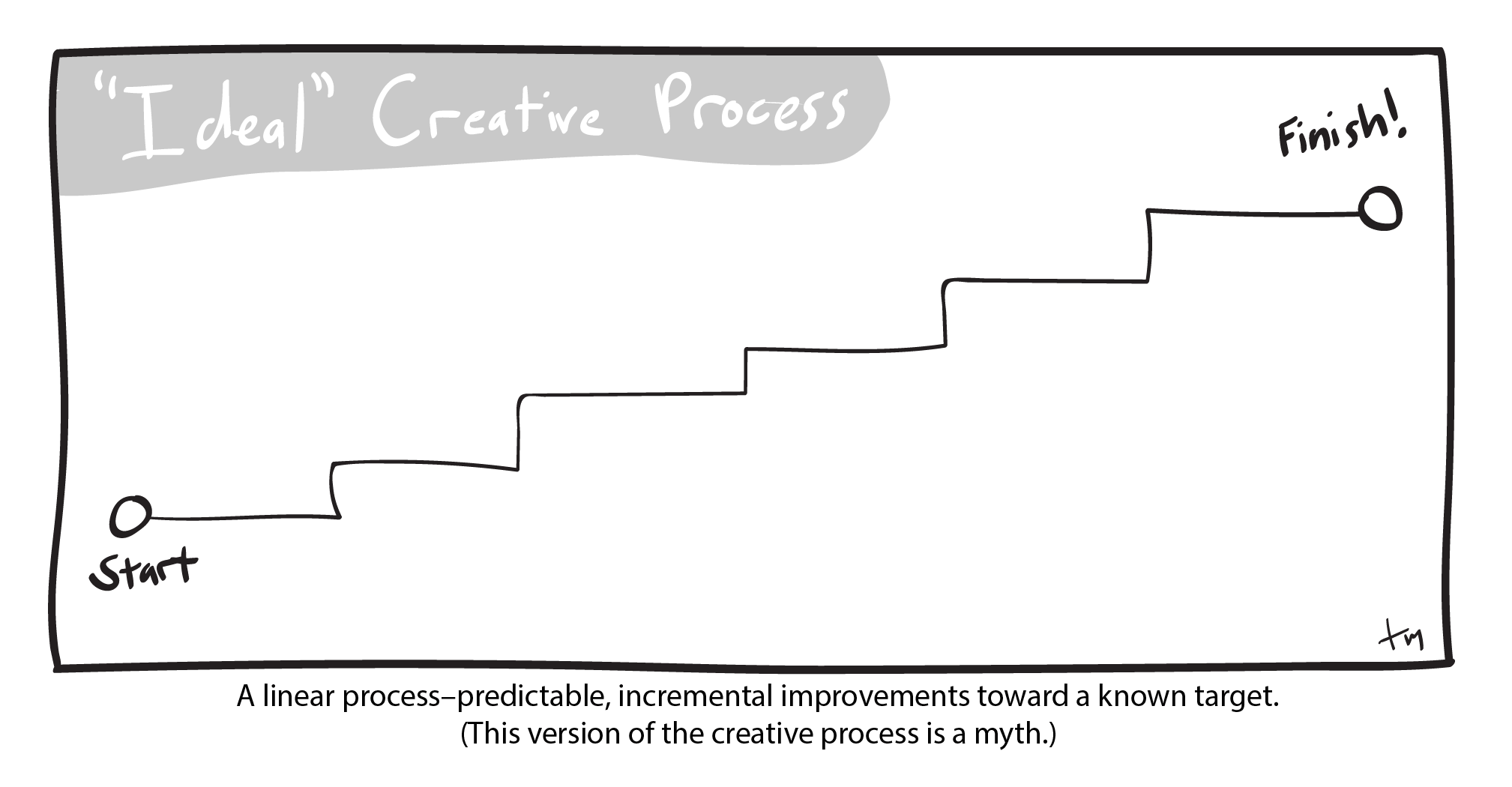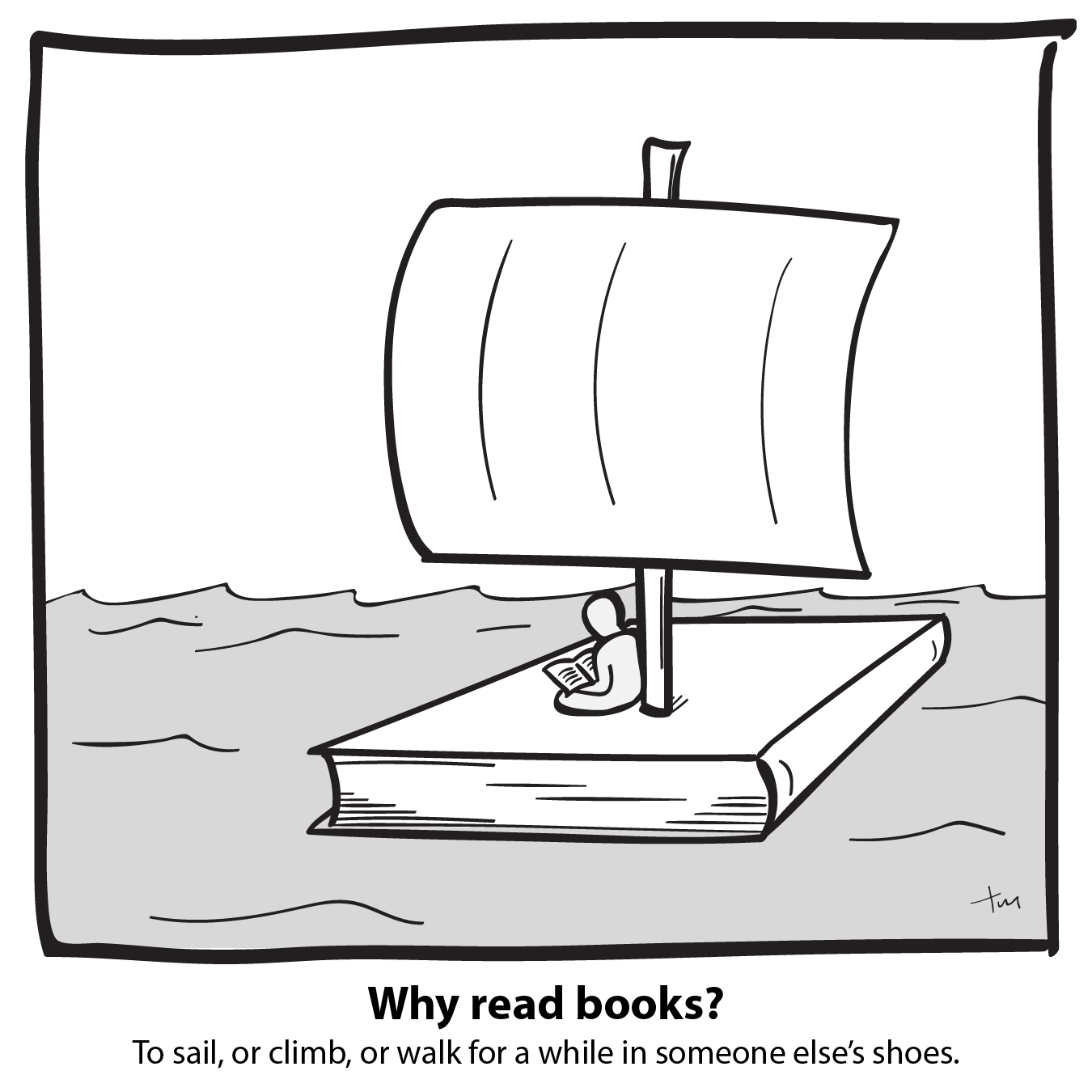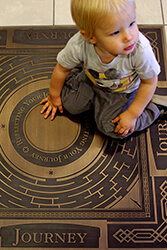This is a continuation of an earlier post, The Creative Process, Part I: The Myth of Orderly Progress.
Creative work is non-linear
Some work follows a clear path. Step 1 is always followed by Step 2, and if you know how many steps there are you can have a pretty good idea of how the rest of the work is going to go and how long it’s going to take. Elements of my work are like that. But the most rewarding and enjoyable projects are the ones that require creative, conceptual exploration–projects where the the path to the end is not mapped out. For that type of work an iterative workflow with regular, incremental improvements to a design isn’t much help.
Deadlines aren’t shy about tromping all over my non-linear creative process if they have to.
But those projects are never open-ended. They have to happen within a certain timeframe, and the deadline isn’t going to be shy about tromping all over my non-linear creative process if it has to.
In Part 1 of this post I talked about how there would be some comfort in a process that was mapped out and more predictable. But in my experience the creative process is less like following a map and a lot more like getting lost in the woods (over and over) and then finding your way home.

Lost in the woods
After the initial discovery phase I usually start with two or three different concepts to try, and the initial excitement about the project carries me along until I realize that none of them will work. By then, I have a much better understanding of the constraints and requirements, and I can sometimes go back and rework one of the dead ends based on the new insight. Sometimes that goes well, but there are times when it doesn’t. (This is the part where the most useful keyboard shortcut is Control + A and Delete or, “Select All and Delete.”)
To start over at this point is
- depressing (because I’ve used up a lot of energy),
- anxiety-producing (because I’ve used up a lot of time) and more importantly,
- very difficult (because I have no creative momentum.)
A little distance from the project is in order, and for me that probably involves some combination of coffee, exercise and/or human connection. The ideas will come.
Welcome the Muse (Do the hard work)
I wrote in Part 1 about the seemingly passive role we have when it comes to having good ideas. The best ideas seem to come from the least expected places, and serendipity is a ticklish thing to try to manufacture.
“With these things there’s no telling, you just have to wait and see.
But I’d rather be working for a paycheck than waiting to win the lottery.”
–Bright Eyes, First Day of My Life
The ancient poets would invoke a Muse before they wrote or recited–this is when it would be nice to have a Muse. It’s not like I can go to the Idea Drawer in my studio and pull out two or three shiny ideas and start building them into a finished product. (Although I do have such a drawer, sort of.) The deadlines don’t wait, but if each good idea seems like an accident then it doesn’t seem like I have much control over when the next one happens.
Part of the reality is that “the muse” is a lot more likely to come to me after I do the hard work–after I sit down and immerse myself in the material, after I’ve done some research into the topic, after I’ve doodled some terrible ideas in my sketchbook. You may not be able to command your muse to sit down beside you, but you can prepare a place for her and make her feel more at home.
Falling down at the finish line
Don’t doubt in the dark what you knew in the light.
The last hurdle for me comes in the form of 11th hour anxiety and self-doubt. This doesn’t always happen, but often enough that I consider it a normal part of the process. As the deadline seems to approach faster than the project can possibly come together, it can be tempting to second guess the direction you’re going, to wonder if you should start over, to start looking for another line of work and begin to ask yourself if anyone has ever really loved you. It’s best to just ignore all that mess and push forward. My dad used to tell me, “Don’t doubt in the dark what you knew in the light.” If you’ve done good work up to this point and laid solid, thoughtful foundations for the work you’re doing then those anxious thoughts are probably baseless. Press on and see those ideas through.
What’s your process?
I’d love to hear what other people’s “normal” creative process is. Tweet them to @PaperbackPage, comment on Facebook, or send me a message.
Creativity, Design, Ideas, Illustration, The Nerdatorium













